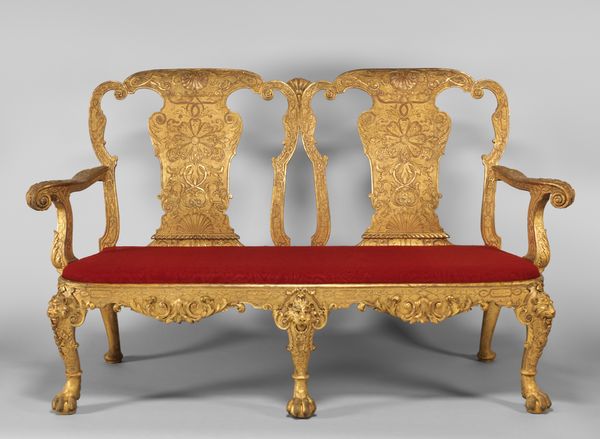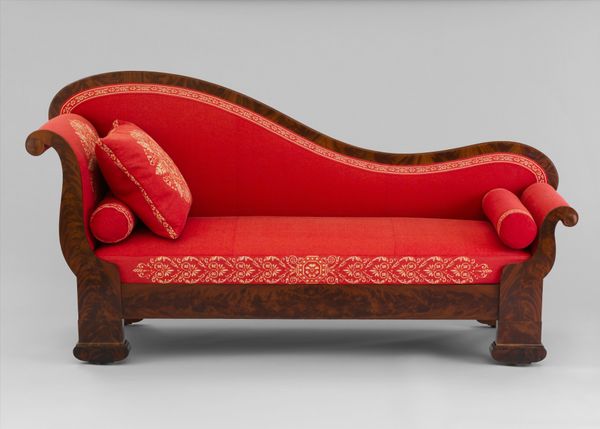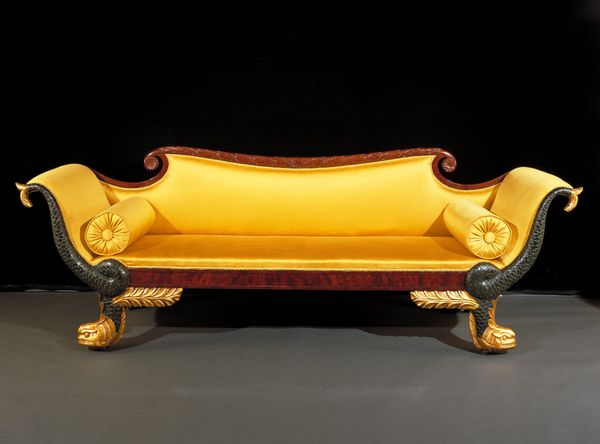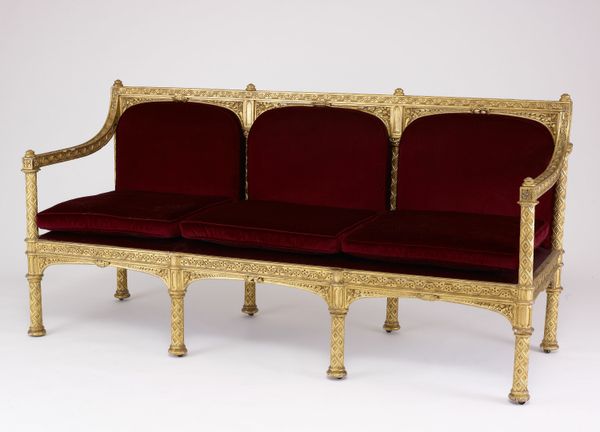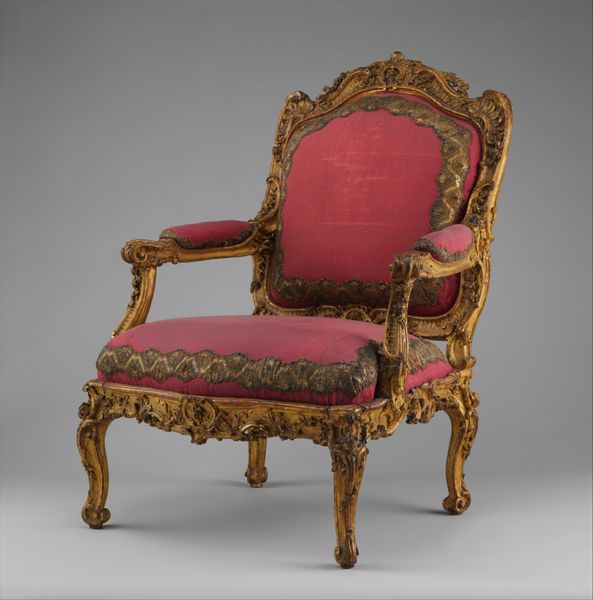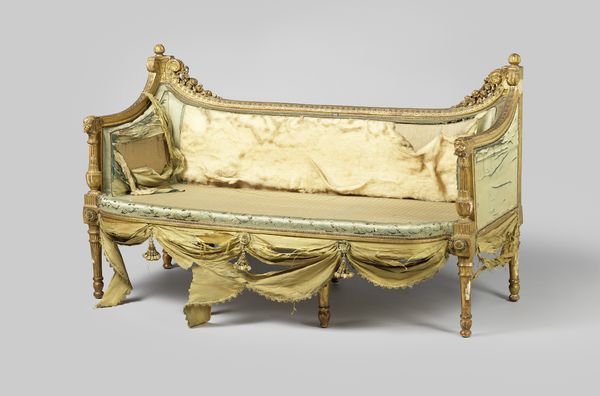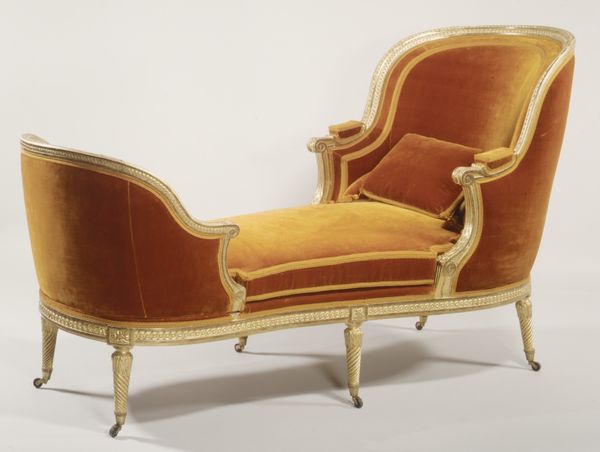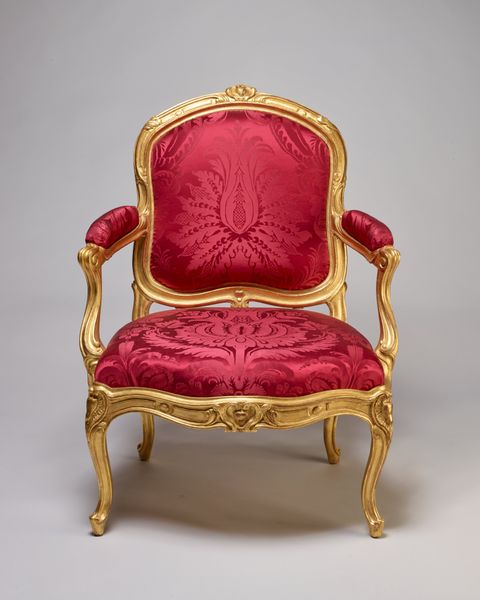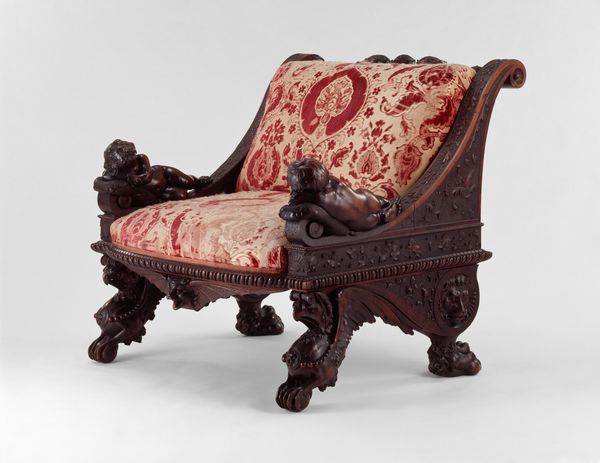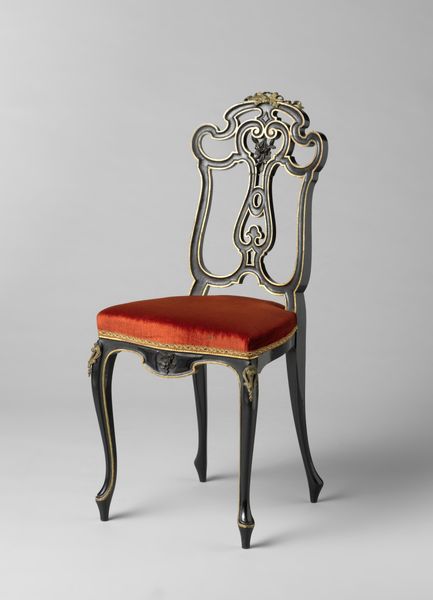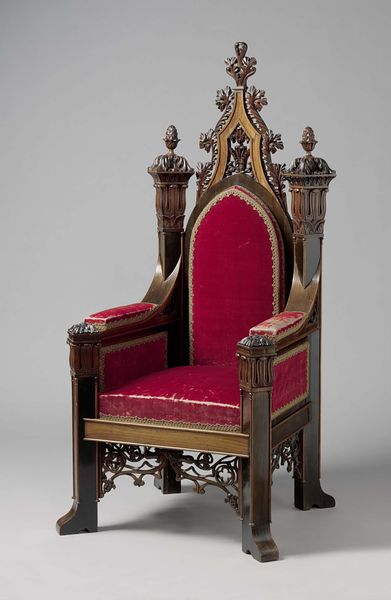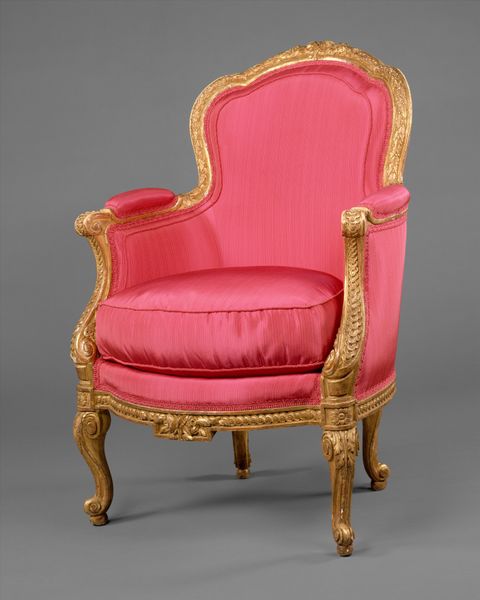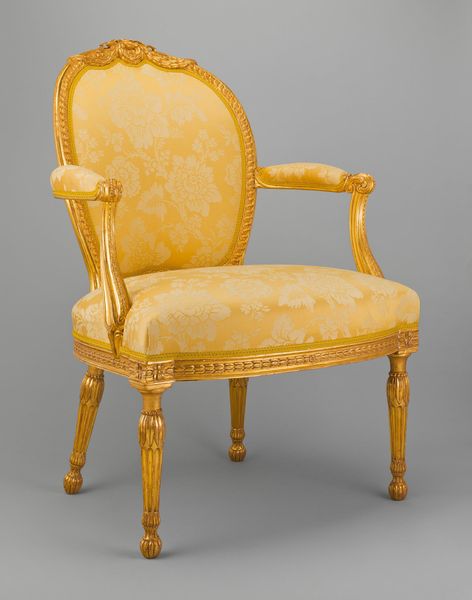
gold, sculpture, wood
#
neoclacissism
#
gold
#
furniture
#
sculpture
#
wood
#
decorative-art
Dimensions: wt. approximated: 29 9/16 × 50 × 24 1/2 in., 50 lb. (75.1 × 127 × 62.2 cm, 22.7 kg) width at feet: 45 3/4 in. (116.2 cm)
Copyright: Public Domain
Curator: Looking at this opulent Gilded-wood bench, dating from 1807 and crafted by Thomas Hope, one is immediately struck by the intensity of the color contrast—the gold trim against that striking red fabric. What's your initial reaction to this piece? Editor: The opulence is… confronting. It’s difficult to look at this object outside of its function in the theatre of wealth, in a world of extreme inequality. That redness just screams power, privilege, even a little excess, doesn't it? Curator: Absolutely, the Neoclassical style here is laden with meaning, not just decoration. Consider the lion-paw feet, the scroll details, even the Egyptianizing headrest shape – each element would evoke power and antiquity, linking the owner to empires past, lending authority. It is so interesting to study symbols. Editor: But who does this authority serve? Whose history gets told when these symbols are deployed? I mean, that type of blatant visual language naturalizes certain hierarchies and makes a lot of assumptions about who belongs where. Are we meant to ignore who was forced to manufacture, distribute, or clean up after these things? Curator: It’s true that this piece exists within a system that’s inherently unequal. Still, isn't there value in understanding how symbols are employed to create, reinforce, and transmit ideologies, for a tiny circle, sure, but ideas that resonated beyond that social bubble? Look how seamlessly Greek and Roman motifs have merged, to become emblems of authority and taste. The gilded wood acts not just as a material signifier of wealth but almost as a cultural signal. Editor: It becomes a problematic cultural signal, I’d say. The piece presents a specific aesthetic lineage as inherently valuable and good. That gilded surface acts as a barrier. We have to work hard to see through all the shininess to glimpse the exploitation baked into its creation, the message it reinforces. Curator: I agree. But by tracing the cultural memories embedded here, and how they came to function in society, we see more than just the surface glitz. We witness the power of imagery to both seduce and solidify power structures over time. Editor: Yes, I guess my work will continue to examine exactly whose labor went into this seduction, and which ideologies it helped solidify.
Comments
No comments
Be the first to comment and join the conversation on the ultimate creative platform.
